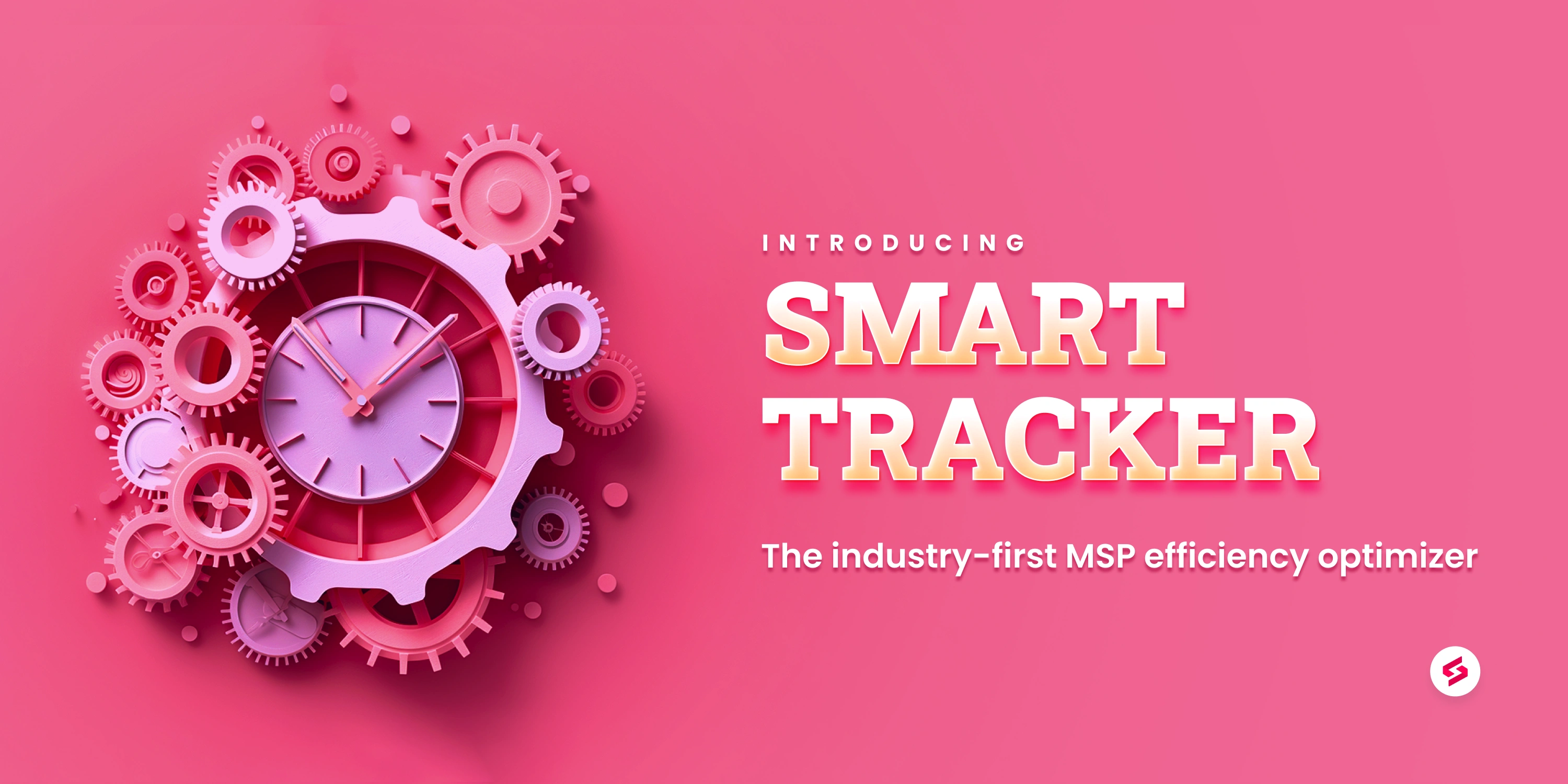Stop ballparking, start smart tracking, and make every hour pay
Introducing SuperOps Smart Tracker
As an MSP, your profitability depends on technician skills, operational efficiency, and client profitability.
The more skilled technicians are, the faster they resolve issues. This translates to a greater volume of issue resolution and, as a result, more billable hours per technician.
The next is operational efficiency, which is how shrewdly they allocate resources (technicians) to tasks so they resolve issues successfully in the least amount of time.
Finally, client profitability. Clients are profitable for an MSP if they bring in revenue without taking up too much of their time. But if what you pay for your technicians’ time on a client exceeds what the client pays them, the MSP is at a disadvantage.
What's the common thread connecting all three MSP “KPIs” - technician skill, MSP efficiency, and client profitability? Time.
When time is diligently tracked and managed, these KPIs fall into place, and the MSP becomes profitable beyond doubt.
Despite time being such a crucial resource to an MSP’s success, MSPs still haven’t harnessed it to their advantage.
“A few hours lost here and there don’t really matter, right?”
In a perfect MSP world, everything’s a ticket, and a timer starts automatically when a technician opens a ticket. But in reality, most of the work happens outside a ticket - over calls, client visits where the technician goes to fix a couple of issues but inevitably ends up fixing 10, or informal requests that involve extensive research and tab-dancing.
Now, an MSP has two options:
1. Brush aside those unticketed hours
An MSP might feel the number of hours left untracked is too insignificant to have any impact on their profitability. However, that is rarely the case. Every billable hour an MSP fails to account for is an hour’s revenue lost from the client. Not only that, untracked time also throws revenue forecasting and strategizing off the track because the MSP has missing data and doesn’t get the complete picture.
2. Use general-purpose time trackers - “Toggl” between apps
For the time-sensible MSP, some PSA tools offer integrations with general-purpose time-tracking software that is also available on mobile so technicians can track time on the go. But the solution is half-baked. MSP technicians do their tech work in the MSP tool and log time in the time-tracking solution, switching back and forth between the two apps.
The bane of ballparking
This laid-back attitude to tracking time and the lack of easy options drives MSPs and their technicians to regress to the prevalent practice - ballparking.
What happens when technicians ballpark time instead of tracking it accurately? MSPs never know the answer to the question, “Where is my time going?” As a consequence, their KPIs of operational efficiency, technician skill, and client profitability become a matter of guesswork.
As the saying goes, what cannot be measured cannot be improved, so MSP growth and profitability take a beating.
Smart tracker - the industry-first easy time-tracking solution
SuperOps Smart Tracker has two simple goals:
Provide technicians with an easy way to track time from anywhere, independently of tickets, so they don’t ballpark anymore.
Provide managers and MSP administrators with valuable time insights to improve operational efficiency, optimize resource utilization and training, and boost client efficiency, ultimately boosting profitability.
Here’s how MSPs can use Smart Tracker to boost profitability from the ground up.
Track time from anywhere without the hassle of tickets
Whether they’re hopping tabs or client sites, technicians can start a timer from any site through the browser extension and from anywhere they are from the mobile widget. The best part? They don’t need to associate a ticket to start the timer; a simple note will do. Time tracking is thus made frictionless, so technicians can account for their time without wasting too much time “tracking time."
Pave the way for confusion-free billing
Before converting time entries into work logs for invoicing, technicians can review their list of timers, clean up outliers, and easily associate the correct tickets with the help of notes. The review process removes the uncertainty from billing, automatically resolving billing disputes and payment discrepancies.
Leave no billable hour unaccounted for
It’s natural for a technician to let a task or two slip in the whirlwind. However, having their workday laid out in a calendar helps them better understand their time usage. If they see an empty time slot on their calendar during their usual work hours, they’ll know they’ve missed something and can log time right there. This way, every billable half-hour is accounted for, resulting in fair compensation for the technician and increased revenue for the MSP.
Improve operational efficiency
While retrospective analysis is good, real-time analysis is much better. With Smart Tracker, managers get real-time visibility into their technicians’ running timers, so if they find a technician taking more time than usual on an issue, they can check in and fix that inefficiency on the spot.
Upskill technicians and boost productivity
The time reports empower managers to set benchmarks for their technicians. If they find a technician consistently taking more time than average to resolve issues around a certain area of service, they can train the technician in that area, improving technician productivity and morale.
Step up resource allocation and utilization
Managers can see the billable vs. non-billable hours split of a technician and take resource allocation calls based on technician pay rate and client revenue. This ensures the highest-paid technicians are assigned high-value tasks that fetch more billable time, leading to increased revenue per technician.
Improve client efficiency and MSP profitability
The Resource Utilization and Client Efficiency Reports give MSP owners insights into how their resources are being utilized across clients and how efficient each client is across ticket categories. If a client is inefficient in a ticket category, the MSP can identify another client who’s efficient in the same category, see what worked for them, and implement the same for the first client. They can then do a trend analysis of the client to see if their efficiency has improved over time.
This way, MSPs can make more clients efficient, reduce the overall time spent on clients, and use the extra time on new clients, resulting in higher profitability.
Take control of your time and see your profitability soar in no time. Start Smart Tracking today.





